Recently, a research team led by Associate Professor Han Sanyang from Tsinghua Shenzhen International Graduate School (Tsinghua SIGS), in collaboration with Professor Xu Hui and Professor Han Chunmiao from Heilongjiang University, as well as Professor Liu Xiaogang from the National University of Singapore, has achieved significant progress in the field of rare earth electroluminescence.
They proposed an innovative organic–inorganic hybridization strategy to overcome the long-standing challenge of charge injection into insulating lanthanide nanocrystals. Their paper, titled Electro-generated excitons for tunable lanthanide electroluminescence, was published online in Nature, marks the fifth Nature paper published by Tsinghua SIGS this year.
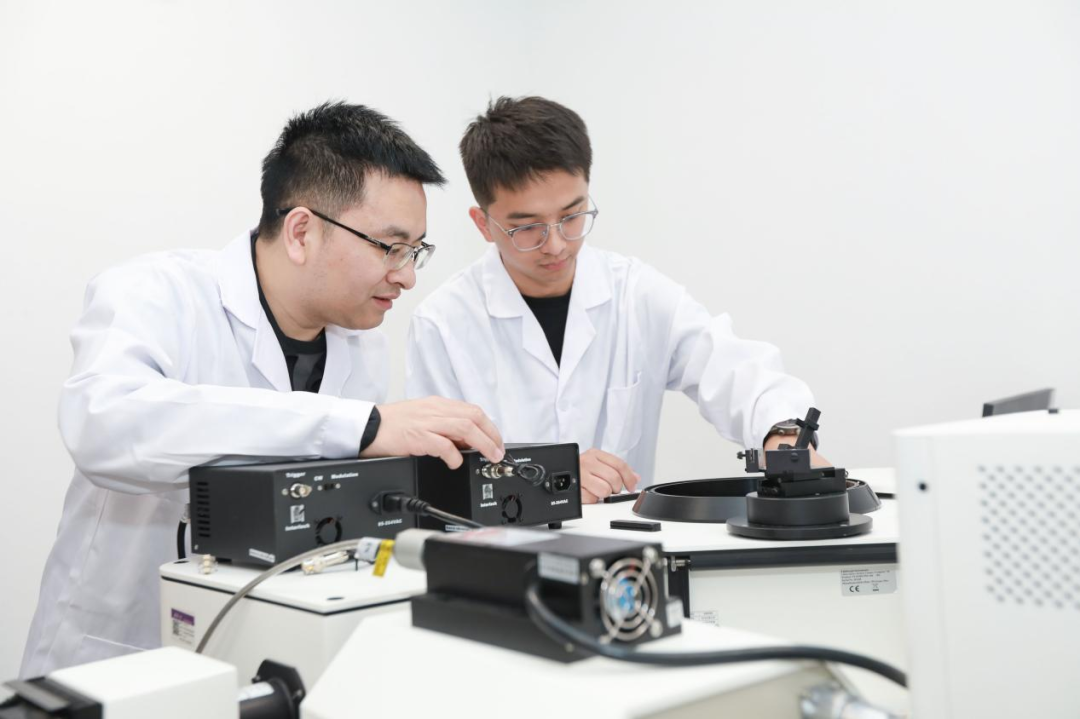
Co-corresponding author Han Sanyang (left) with his student and co-first author Zhang Peng
Electroluminescence (EL), the direct conversion of electrical energy into light, serves not only as the cornerstone of modern display and lighting technologies but also as a key enabler for advancements in biophotonics, quantum information, and laser technology. In recent years, materials like organic molecules and quantum dots have led to major gains in the efficiency and color purity of light-emitting systems. Still, conventional luminescent materials and devices struggle with limited color tuning, inflexible design, and poor long-term stability.
Lanthanide-doped nanocrystals (Ln-NCs) are inherently promising candidates for EL materials due to their rich energy level structure, narrow emission lines, and high device stability. They possess multiple narrow emission lines, high stability, and a rich energy level structure that allows broad color tuning without changing the device design. Yet their insulating nature has long prevented efficient electrical excitation, hindering both research and real-world use in EL devices.
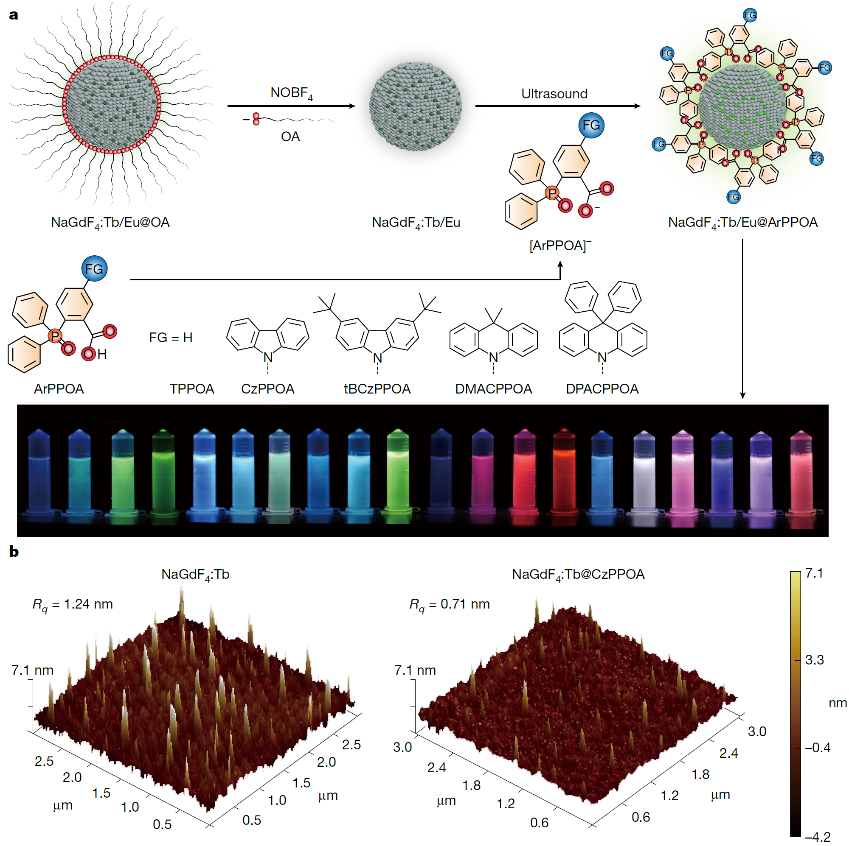
Fig. 1 | System design of phosphine oxide–lanthanide fluoride nanocrystal emitters.
To overcome the fundamental challenges of electro-generated exciton generation, transport, and injection in lanthanide-doped nanocrystal EL, the research team hybridized Ln-NCs with organic semiconductor molecules by precisely tailoring the energy level alignment within the organic-inorganic hybrid system. This approach successfully enabled efficient spin-state conversion of electro-generated excitons and interfacial energy injection at the insulating nanocrystal. Consequently, they achieved EL across the visible and even near-infrared (NIR) spectral regions without modifying the device structure.
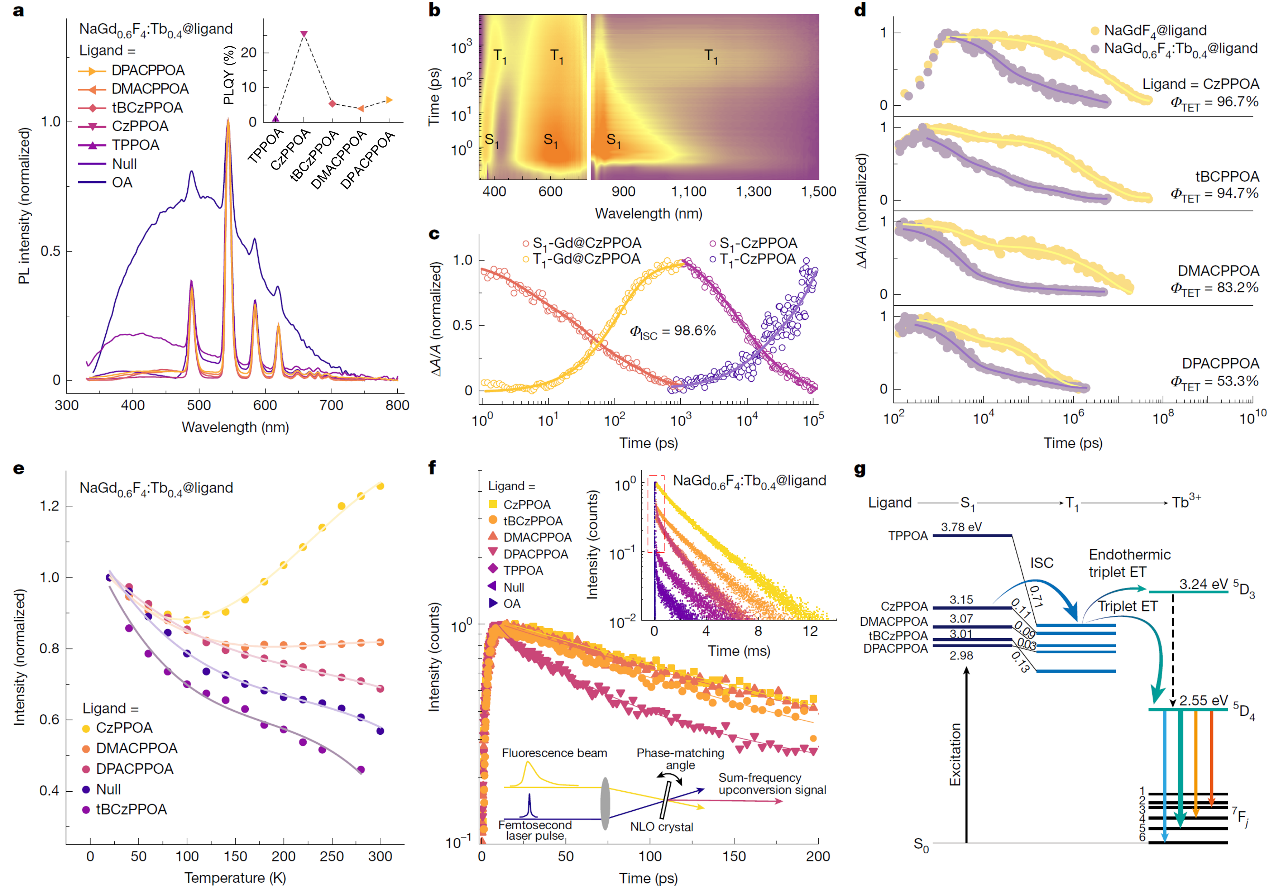
Fig. 2 | Photophysical properties of NaGd1-xF4:Tbx@ArPPOA nanohybrids
In the study, the research team designed a series of carboxylic acid derivatives of aryl phosphine oxides. These molecules firmly anchor onto the surface of ~4 nm NCs via their carboxyl groups. Under an electric field, these functionalized organic ligands first capture electrons and holes, forming electro-generated excitons at the NC interface. Subsequently, through a ligand-to-NC energy transfer process, the energy is funneled to the lanthanide ions within the NCs. By carefully tuning the lanthanide composition and molecular energy levels, they achieved pure, characteristic lanthanide ion emission with controllable multicolor output.
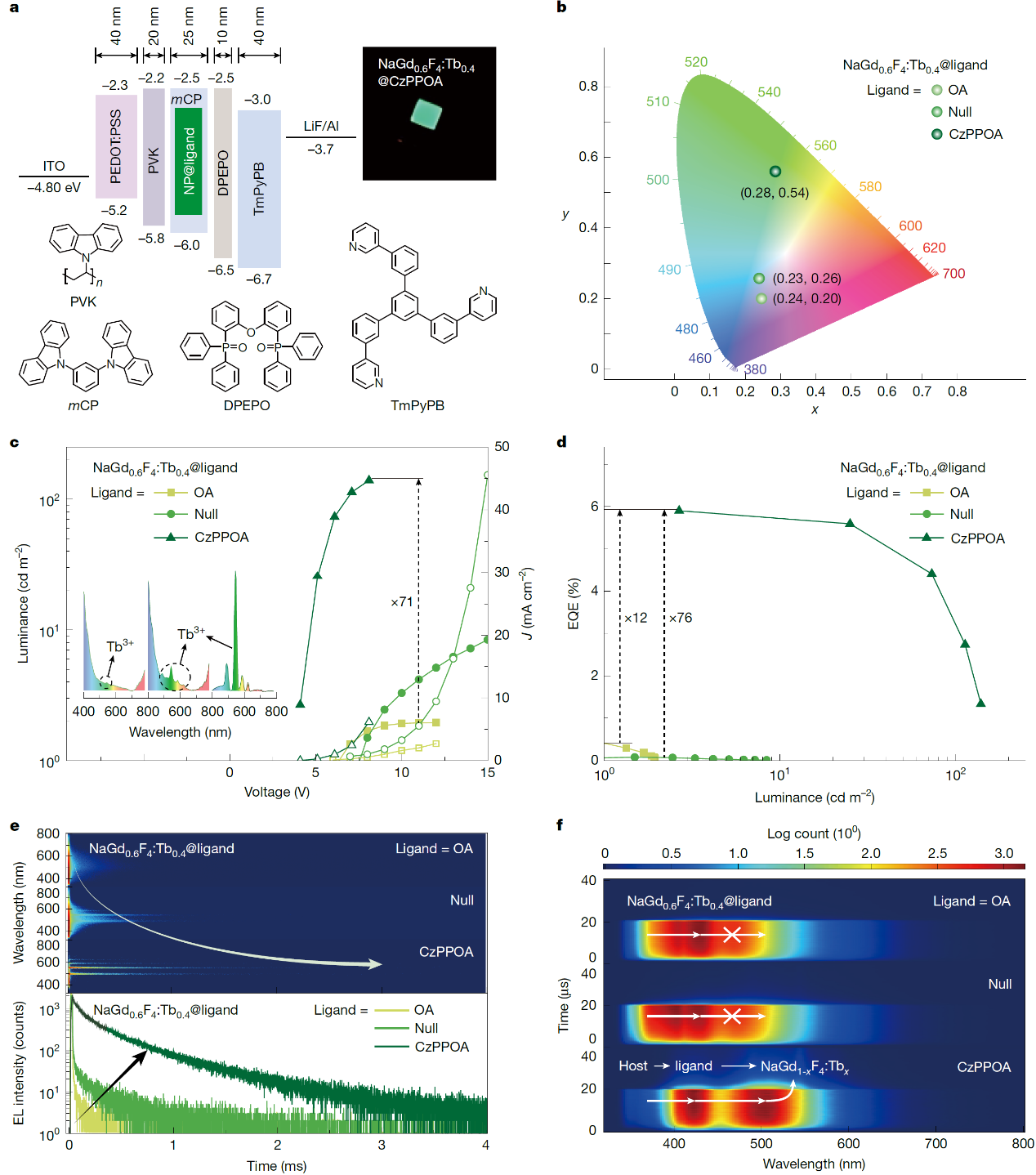
Fig. 3 | EL performance of NaGd0.6F4:Tb0.4@ligand devices.
To elucidate the photophysical processes at the Ln-NC/organic molecule hybrid interface, the team employed various transient and temperature-dependent spectroscopic techniques. They observed a lanthanide-nanocrystal-induced acceleration of intersystem crossing (ISC) in the organic molecules (<1 ns), with an ISC efficiency reaching 98.6%. Notably, carbazole-modified phosphine oxide (CzPPOA) exhibited the most efficient triplet energy transfer (TET) efficiency to the lanthanide ions, achieving 96.7%. Further investigation revealed that this rapid TET benefits from well-matched energy levels facilitating endothermic TET and a significant suppression of interfacial non-radiative losses. The clarification of this ultrafast mechanism helps establish design principles and optimization directions for triplet exciton injection into insulating nanocrystals.
Leveraging the efficient carrier transportation and exciton transfer properties of the Ln-NC-molecule hybrids, the team fabricated multilayer EL devices based on NaGd0.6F4:Tb0.4@CzPPOA. These devices demonstrated a current efficiency of 9.99 cd A-1 and a power efficiency of 7.66 lm W-1. The external quantum efficiency (EQE) reached 5.9%, representing a 76-fold enhancement compared to devices using non-functionalized insulating NCs, with an exciton utilization efficiency of 88%. These device performance metrics confirm that the ligand-functionalized Ln-NC-organic hybrid system enables effective exciton capture and energy injection, thereby overcoming the long-standing bottleneck of inefficient EL from insulating nanocrystals.
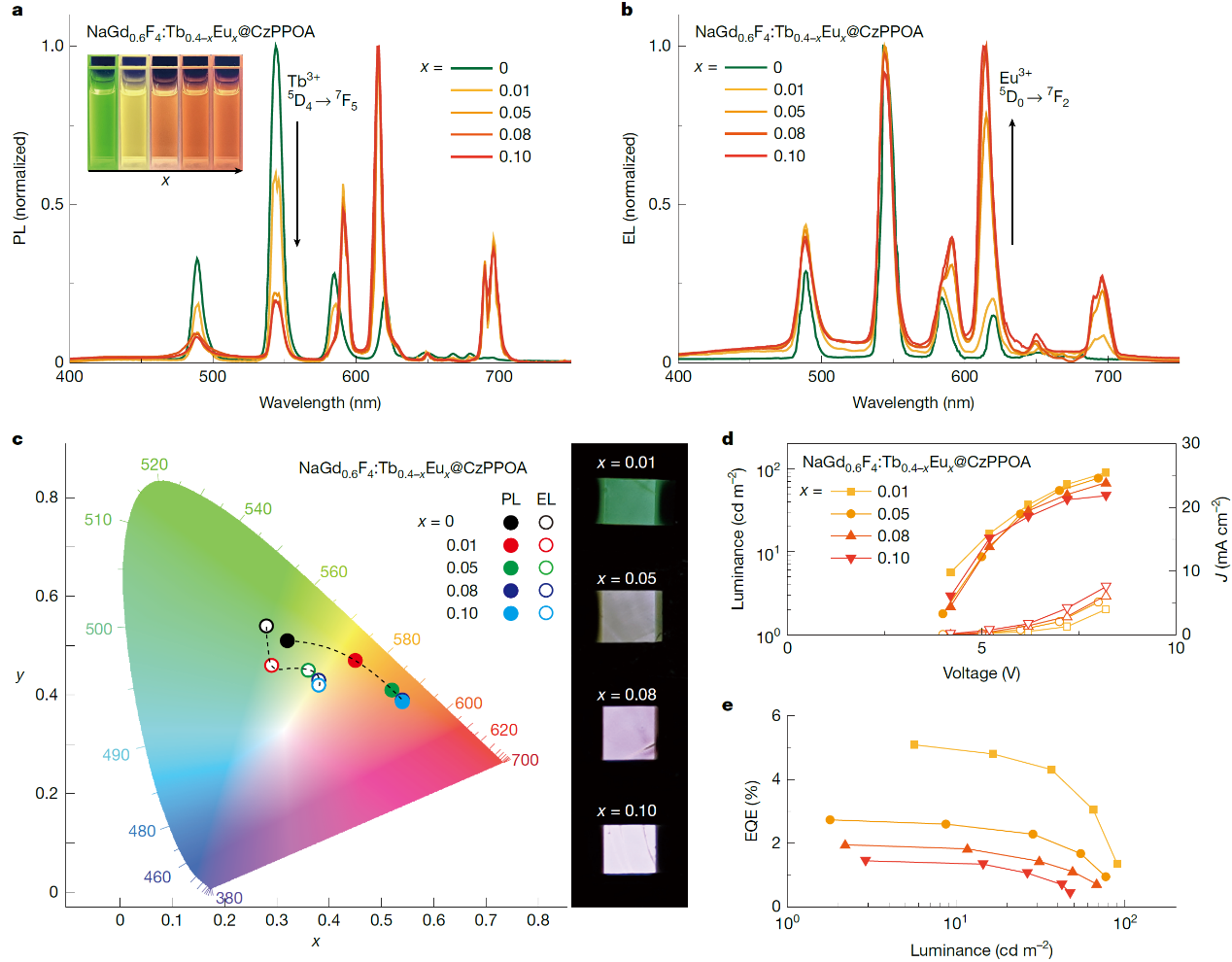
Fig. 4 | Emission characteristics of dually doped NaGd0.6F4:Tb0.4-xEux @CzPPOA nanocrystals.
Owing to the richness and environmental robustness of lanthanide 4f energy levels, a single ligand type holds the potential to sensitize various lanthanide ions, enabling controllable and tunable emission colors. By adjusting the doping components and concentrations of lanthanide ions within the NCs, the team successfully tuned the emission color under both photoexcitation and electrical excitation, all while maintaining an identical EL device structure. Simple doping with Eu3+ and Nd3+ ions resulted in a shift of the EL emission from green to warm white light and even to NIR light, with only minor variations in device efficiency (e.g., for 1% Eu3+ doping: current efficiency of 8.48 cd A-1, power efficiency of 6.34 lm W-1, EQE of 5.09%). This multicolor tuning strategy is difficult to achieve with traditional organic or quantum dot EL devices, offering a novel pathway for future economically viable and versatile multicolor displays and special-band EL devices.
This study demonstrates highly efficient electroluminescence from lanthanide nanocrystals achieved through a ligand engineering approach. By leveraging the optoelectronic synergy of organic semiconductor ligands, the research team established a multifunctional strategy that goes beyond conventional surface passivation. The engineered ligands facilitate the confinement of charges and excitons within the nano-hybrid system, effectively allocating exciton energy to the lanthanide emitter ions. These characteristics yield electroluminescence with exceptional color purity, spectral tunability, and high energy efficiency. More importantly, these results highlight the potential of this ligand-functionalized nanocrystal platform for multi-spectral electroluminescence, particularly in applications such as high-resolution, wide-color-gamut displays and near-infrared technologies.
The corresponding authors are Professors Liu Xiaogang from the National University of Singapore, Professors Xu Hui and Han Chunmiao from Heilongjiang University, and Professor Han Sanyang from Tsinghua Shenzhen International Graduate School. The co-first authors are Tan Jing (Master’s student, Heilongjiang University), Zhang Peng (Ph.D., Tsinghua SIGS), and Song Xiaoqing (Master’s student, Heilongjiang University). Other contributors include Professor Zhang Jing and Associate Professor Duan Chunbo from Heilongjiang University, Professor Wang Feng from the City University of Hong Kong, and Professor Zhang Zhilong from South China University of Technology.
Read more: https://www.nature.com/articles/s41586-025-09717-1
Source: Han Sanyang and Zhang Peng
Edited by Chen Jundou
Reviewed by Lin Zhoulu